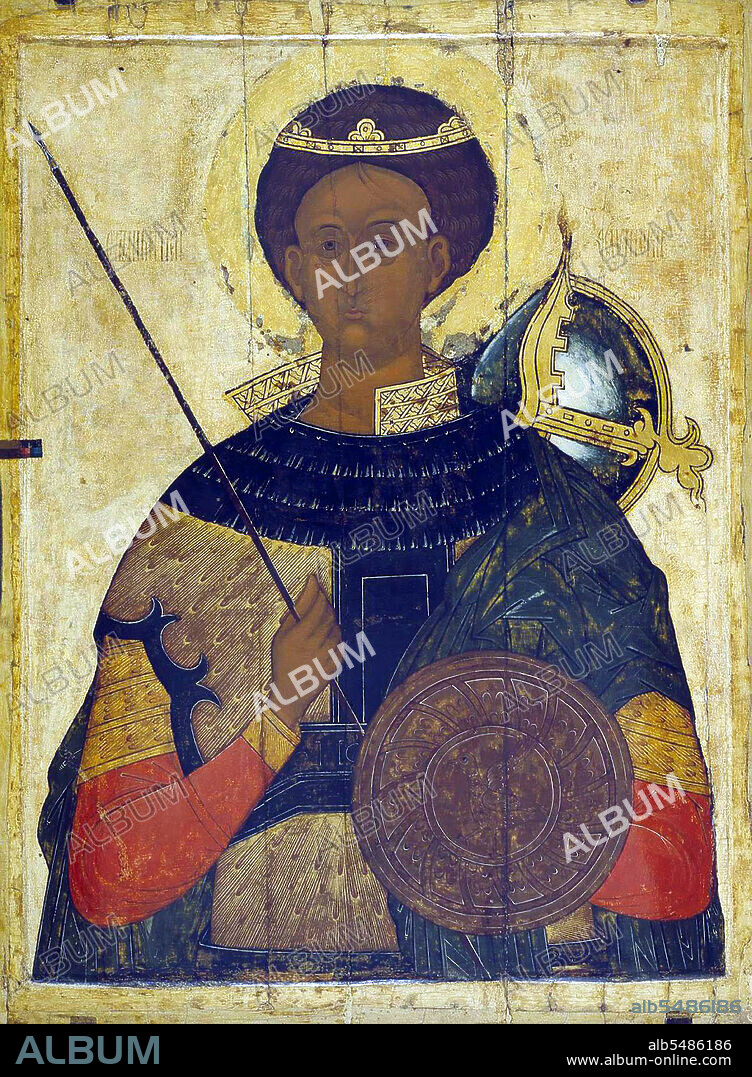alb5486186
A Russian Orthodox icon of St. Demetrios the Great Martyr and Myrrh-streamer.

|
Ajouter à une autre Lightbox |
|
Ajouter à une autre Lightbox |



Avez-vous déjà un compte? S'identifier
Vous n'avez pas de compte ? S'inscrire
Acheter cette image

Titre:
A Russian Orthodox icon of St. Demetrios the Great Martyr and Myrrh-streamer.
Légende:
Voir la traduction automatique
Saint Demetrius of Thessaloniki was a Christian martyr, who lived in the early 4th century. During the Middle Ages, he came to be revered as one of the most important Orthodox military saints, often paired with Saint George. His feast day is 26 October for Christians following the Gregorian calendar and 8 November for Christians following the Julian calendar. Some scholars believe that for four centuries after his death, St. Demetrius had no physical relics, and in their place an unusual empty shrine called the 'ciborium' was built inside Hagios Demetrios. What is currently purported as his remains subsequently appeared in Thessaloniki, but the local archbishop (John of Thessaloniki, 7th century) was publicly dismissive of their authenticity. These are now also kept in Hagios Demetrios. According to believers, these relics were ascertained to be genuine after they started emitting a liquid and strong scented myrrh. This gave the saint the epithet 'Myrovlatas'.
Crédit:
Album / Pictures From History/Universal Images Group
Autorisations:
Modèle: Non - Propriété: Non
Questions sur les droits?
Questions sur les droits?
Taille de l'image:
3600 x 4902 px | 50.5 MB
Taille d'impression:
30.5 x 41.5 cm | 12.0 x 16.3 in (300 dpi)
Mots clés:
ART (CATÉGORIE) • ART • ART, PEINTURE • CHRÉTIEN • CHRETIEN, CULTE • CHRÉTIENNE • CHRÉTIENS • CULTE: CHRETIEN • HISOIRE • HISTOIRE • MIRACLE • MIRACLES, TOUS • PEINTURE • RELIGION • RELIGION: CHRETIENNE • RUSSE • RUSSIE • SAINT • SAINTE • SAINTS • SAINTS, NOMBREUX • TABLEAU • TABLEAUX
 Pinterest
Pinterest Twitter
Twitter Facebook
Facebook Copier le lien
Copier le lien Email
Email
